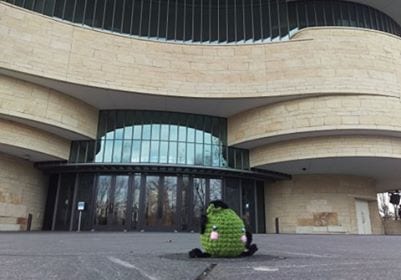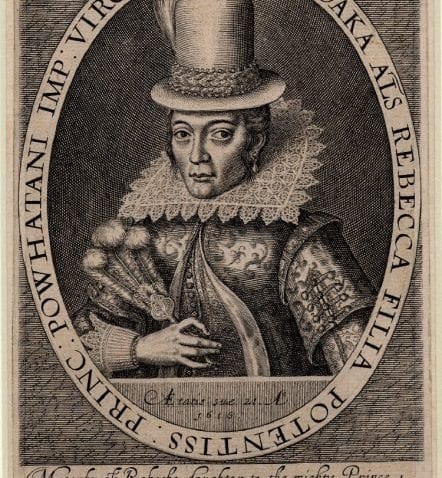It’s taken me a minute to get to finish this blog as we have been kept so busy these past few days paneling with several organizations and going to groundbreaking shows. Native American history hits home for me which is part of the reason I find it both difficult to talk about yet easy to advocate for. Before we attended the museum, I did a little bit of research on the institution and gave a brief presentation of what I had found important. The first was their mission statement which was available through several pages of the site and states:
In partnership with Native peoples and their allies, the National Museum of the American Indian fosters a richer shared human experience through a more informed understanding of Native people.
Second, was their vision statement which I have come to understand through conversation with their senior staff as something of a far-off goal that spans many decades and states:
Equity and social justice for the Native peoples of the Western Hemisphere through education, inspiration, and empowerment.
Some facts about the museum also include that they have an expansive collection of Native American art that spans the western hemisphere and approximates 800,000 objects which encompass 10,000 years of history. It was established in 1989 through an Act passed by the 101st Congress to be the first institution dedicated only to indigenous art.

Junimo outside the entrance of the NMAI
As for our visit, we were given a tour of the museum which started with a discussion of the architecture of the building, a land acknowledgment, as well as a discussion of the numerous tribal flags that hung in the entrance. The curvilinear design of the building is meant to reflect organic structures and emulate the process of having been carved by natural forces such as wind and water. The exterior of the museum on its own was breathtaking and I hope to visit again to see the indigenous plants thriving when it is not winter!
We were lead through the ongoing Americans exhibit which takes a deeper look into how Native “images, names, and stories infuse American history and contemporary life.” The myriad of native-inspired Americana in the entrance to the exhibit covered the walls and we were informed that Native iconography was used to sell just about anything and everything. Our tour guide also mentioned that museum-goers who are native tend to be overwhelmed. The sheer volume of material on display can be interpreted in several ways however the double consciousness one assumes by existing in the space is inescapable.

Portrait of Pocahontas

Rotunda painting of Pocahontas saving John Smith
The Americans exhibit also tells three historical narratives that most who were educated in the US school system are aware of and we were shown two. The first and most famous include mythology around Pocahontas. Some of the images we discussed are ones we got to see in person at the Rotunda in the US Capitol building. Spoiler alert: there is little that was recorded about her life and she was 11 when the tall tales of John Smith were recorded. She only sat for one portrait in her life which, even today, is questioned as for its accuracy due to stylistic choices that helped support John Smith’s narrative.
Next, we were taken through an exhibit and were given a 15-minute history of the varying perspectives on the Indian Removal Act which led to the Trail of Tears. It was heavy, to say the least, and certainly is a dark stain on US history that I personally never was taught my public school education.
In a panel after our tour, we were educated on the museum’s repatriation efforts and that the NMAI has returned close to or 100% of human remains, as well as sacred/ceremonial items that were procured by the collector who had donated his items to, found the museum. The act of repatriation is essentially unheard of. Moving forward the museum is looking to procure contemporary indigenous art, especially from female-identifying artists. In my initial google-search of the NMAI, most of the reviews were about how good the food was but in the end, the institution leaves you with a full stomach and an understanding that indigenous people are neither monolithic nor extinct.
